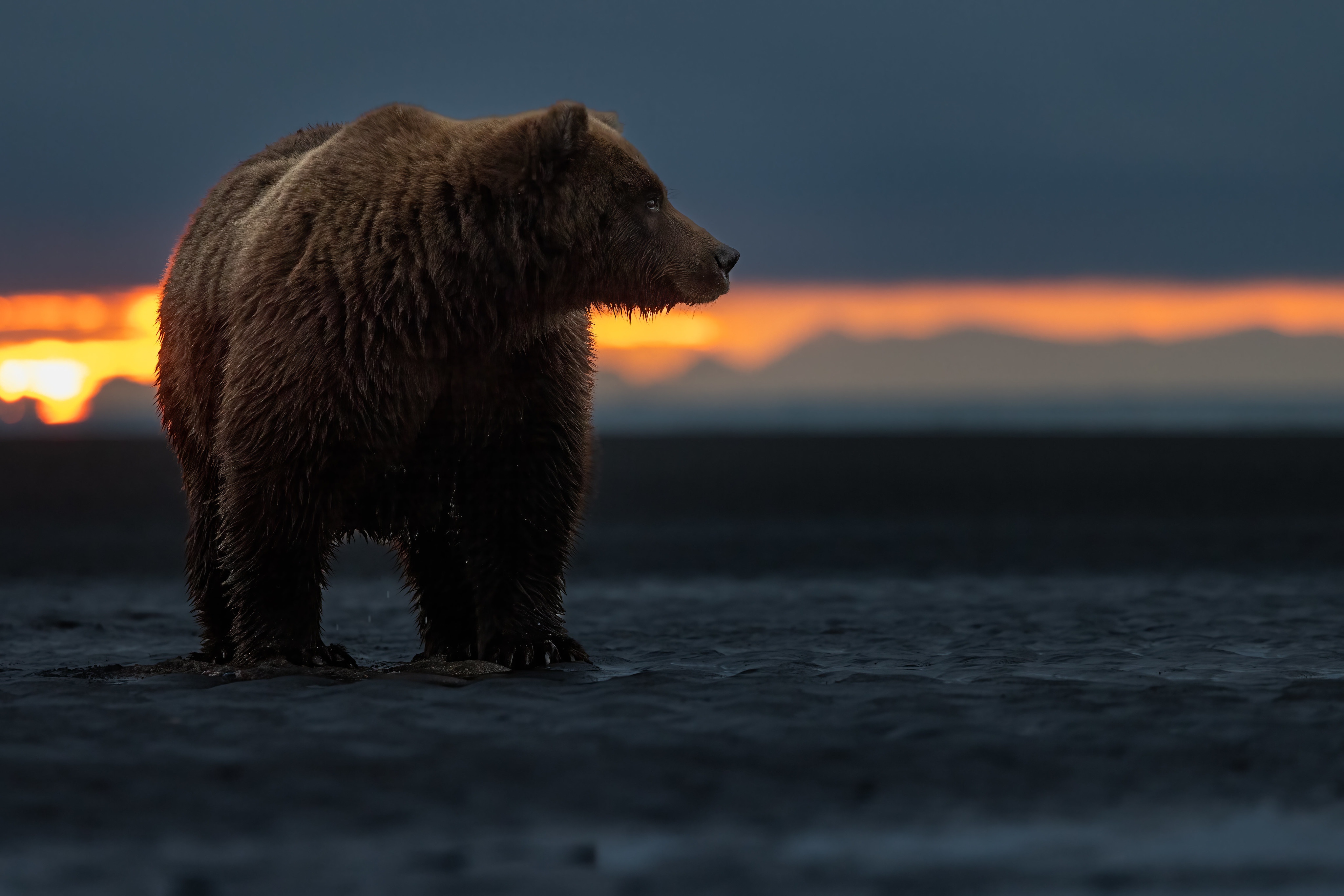Hey there, nature enthusiasts! Let's dive right into the world of one of the most fascinating creatures on our planet. The bear is not just an animal; it's a symbol of strength, adaptability, and survival. From ancient folklore to modern wildlife documentaries, bears have captured our imagination for centuries. But how much do we really know about them? This article will take you on a journey through their biology, behavior, habitats, and the challenges they face in today's world. So buckle up, because we're about to explore everything you need to know about the bear!
Now, before we get too deep into the details, let's talk about why understanding these magnificent animals matters. Bears play a crucial role in maintaining the balance of ecosystems. They help spread seeds, control insect populations, and even influence plant growth. By learning more about them, we can better appreciate their importance and work towards protecting them. And trust me, there's so much more to bears than what you see in cartoons or movies.
So, whether you're a wildlife lover, a student researching for a project, or simply someone who wants to expand their knowledge, this article has got you covered. We'll break down everything from their biology to conservation efforts, and even touch on some cool facts you probably didn't know. Ready to embark on this bear-filled adventure? Let's go!
Read also:Hillary Clinton The Remarkable Journey Of A Political Titan
Daftar Isi
Read also:Why Ucsd Womens Basketball Is Setting The Court On Fire
Biology of the Bear
Alright, let's start with the basics. Bears belong to the family Ursidae, and they are large mammals known for their muscular build, thick fur, and incredible strength. Their bodies are perfectly adapted for survival in various environments, from dense forests to icy tundras. One of the most fascinating aspects of their biology is their ability to hibernate during harsh winters. This process allows them to conserve energy when food is scarce.
Here's a quick breakdown of their key biological features:
- Strong limbs with sharp claws for digging and climbing
- Highly developed sense of smell, which is crucial for finding food
- Thick fur that provides insulation against cold temperatures
- Large brains relative to their body size, indicating high intelligence
Interestingly, bears have a unique digestive system that allows them to process a wide variety of foods. This adaptability is one of the reasons they've thrived in so many different parts of the world.
Bear Species Around the World
There are eight recognized species of bears, each with its own distinct characteristics and habitats. Let's take a closer look at some of the most well-known ones:
- Grizzly Bear: Found primarily in North America, these bears are known for their impressive size and powerful build.
- Polar Bear: The largest land predator on Earth, polar bears inhabit the Arctic regions and are perfectly adapted to life on ice.
- Black Bear: Common in North America, black bears are smaller and more adaptable than their grizzly cousins.
- Panda Bear: Native to China, pandas are famous for their bamboo diet and adorable appearance.
Each species has its own set of challenges and adaptations, making them truly remarkable creatures.
Habitats and Distribution
Bears can be found in a variety of habitats across the globe. From the dense forests of North America to the icy plains of the Arctic, these animals have learned to thrive in some of the harshest environments on Earth. Their ability to adapt is one of the reasons they've been so successful as a species.
Here are some of the main habitats where bears live:
- Forests
- Tundras
- Mountain ranges
- Grasslands
Despite their adaptability, many bear populations are facing threats due to habitat loss and climate change. Protecting their natural habitats is crucial for their survival.
What Do Bears Eat?
When it comes to diet, bears are true omnivores. While some species, like the panda, have specialized diets, most bears eat a combination of plants and animals. Their diets can vary depending on the season and availability of food.
Here's a list of common foods consumed by bears:
- Fruits and berries
- Fish and small mammals
- Insects and honey
- Nuts and seeds
Interestingly, some bears, like the polar bear, have evolved to become almost exclusively carnivorous, relying on seals and other marine animals for sustenance.
Behavior and Social Structure
Bears are generally solitary animals, but they do exhibit some interesting social behaviors. During mating season, males and females will come together, and mothers will care for their cubs for several years. Despite their reputation for being aggressive, bears are actually quite intelligent and can form complex relationships with one another.
Here are a few key behaviors to note:
- Mother bears are extremely protective of their cubs
- Bears use vocalizations and body language to communicate
- They have been observed playing and engaging in social activities
Understanding bear behavior is essential for anyone who interacts with them in the wild, whether it's hikers, researchers, or conservationists.
Bear in Human Culture
Bears have played a significant role in human culture for thousands of years. From ancient myths to modern media, they have been depicted in countless ways. In many Native American cultures, bears are seen as symbols of strength and wisdom. Meanwhile, in popular culture, bears are often portrayed as friendly and cuddly characters.
Here's a quick look at how bears have influenced human culture:
- They appear in folklore and mythology across the globe
- They have been featured in literature, films, and television shows
- They are often used as mascots for sports teams and organizations
Despite their sometimes fearsome reputation, bears have a special place in our hearts and imaginations.
Threats to Bear Populations
Unfortunately, many bear species are facing serious threats to their survival. Habitat loss, climate change, and human-wildlife conflict are just a few of the challenges they encounter. For example, polar bears are particularly vulnerable to the effects of global warming, as their icy habitats continue to shrink.
Here are some of the main threats to bear populations:
- Deforestation and urbanization
- Poaching and illegal wildlife trade
- Climate change and its impact on their habitats
Addressing these issues requires a global effort and a commitment to conservation.
Conservation Efforts
Thankfully, there are many organizations and initiatives dedicated to protecting bears and their habitats. From creating protected areas to educating the public about coexisting with wildlife, these efforts are making a real difference.
Here are some of the key conservation strategies being implemented:
- Establishing national parks and wildlife reserves
- Supporting research and monitoring programs
- Encouraging sustainable practices in local communities
By working together, we can ensure that future generations have the opportunity to experience the beauty and majesty of bears in the wild.
Fun Facts About Bears
Now, let's wrap things up with some fun facts about these incredible animals. Did you know that:
- Bears can run up to 35 miles per hour
- Polar bears have black skin under their white fur
- Black bears are excellent climbers and swimmers
- Bears can live up to 30 years in the wild
These facts just scratch the surface of what makes bears so fascinating. There's always more to learn about these amazing creatures!
The Future of Bears
As we look to the future, it's clear that the fate of bears is intertwined with our own. By addressing the challenges they face and supporting conservation efforts, we can help ensure their survival. But it's not just about protecting them for their own sake; it's about preserving the rich biodiversity of our planet.
So, what can you do to help? Start by educating yourself and others about the importance of bears and their role in ecosystems. Support organizations working to protect them, and make choices in your daily life that promote sustainability. Together, we can make a difference!
Kesimpulan
In conclusion, bears are truly remarkable animals that deserve our respect and admiration. From their incredible biology to their cultural significance, there's so much to appreciate about these majestic creatures. By understanding the challenges they face and taking action to protect them, we can help ensure that bears continue to thrive in the wild.
So, the next time you see a bear in a documentary or even in real life, take a moment to appreciate all that they represent. And don't forget to share what you've learned with others. After all, the more people know about bears, the better equipped we'll be to protect them. Thanks for reading, and remember – the world is a better place with bears in it!


